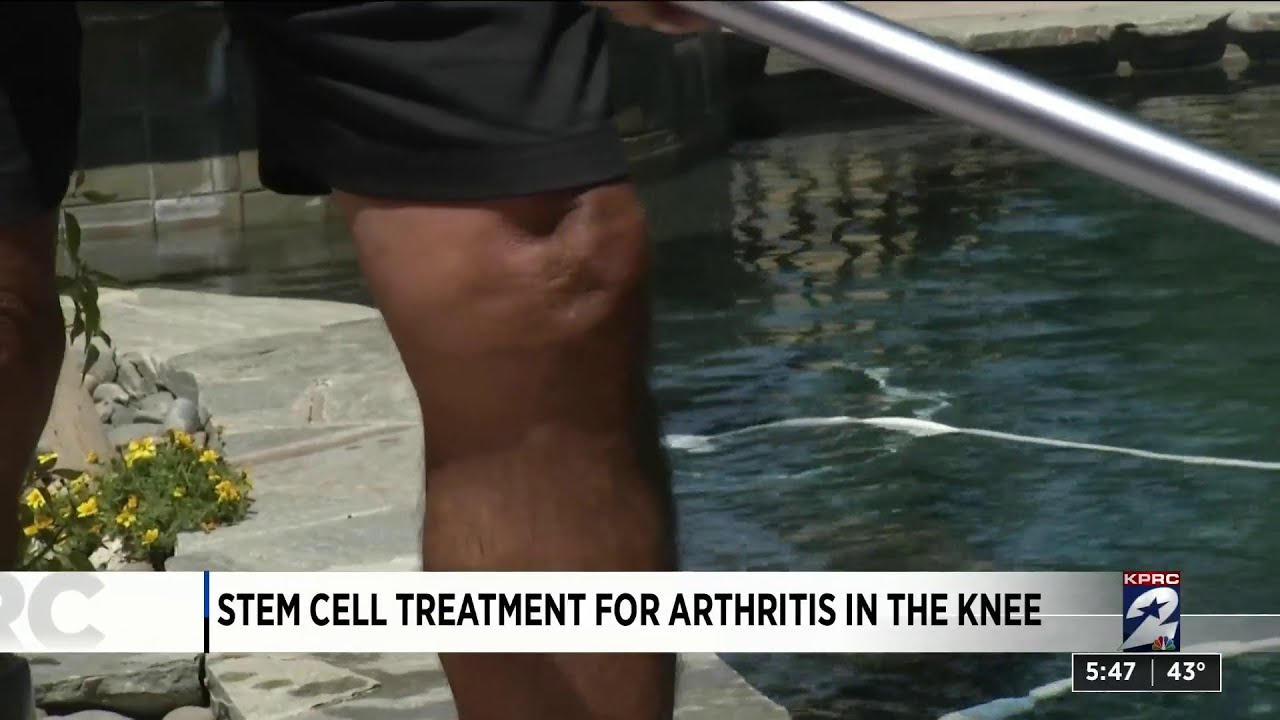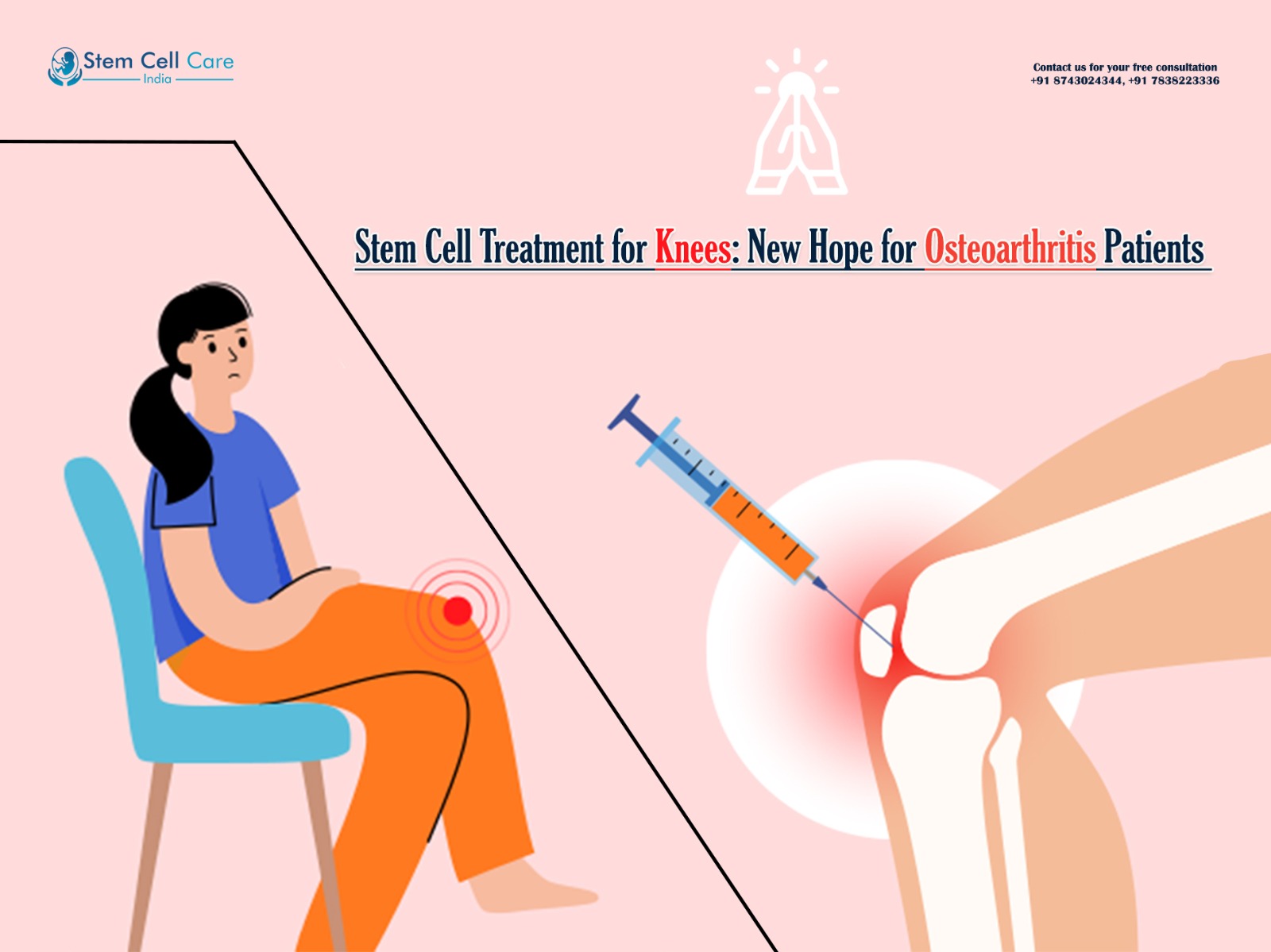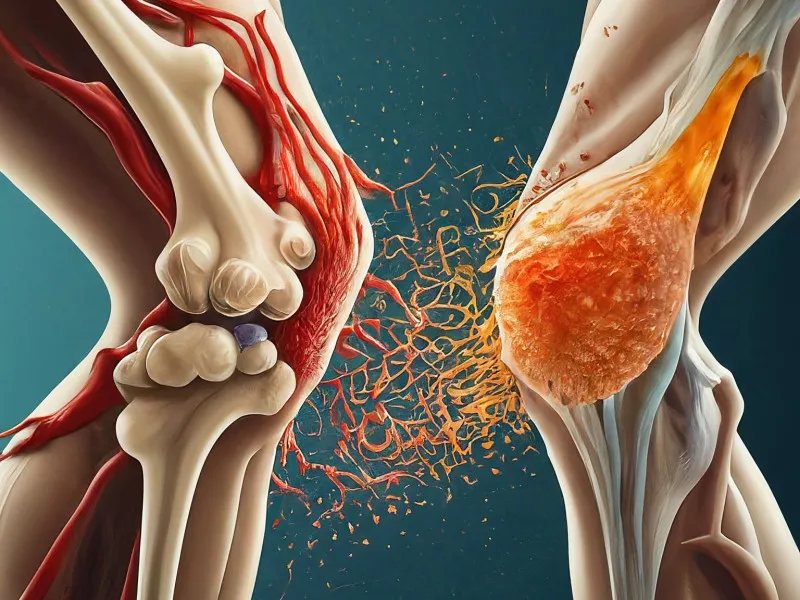Innovative stem cell treatment is changing the landscape for those suffering from arthritis in the knee, providing a beacon of hope for millions. With 14 million individuals affected by this condition, many face the prospect of knee replacement surgery. However, new advancements offer a way to manage pain and potentially delay the need for invasive procedures.
Orthopedic surgeon Jason Dragoo is at the forefront of this exciting development, utilizing stem cells harvested from the body’s own fat pads during minimally invasive surgery. Early studies suggest this treatment significantly reduces pain and inflammation, and for patients like Al Perez, it has transformed their quality of life. Within days of the procedure, Al experienced remarkable relief, allowing him to return to the activities he loves.
Comprehensive Overview of Arthritis in the Knee

Definition and Types of Arthritis
When it comes to knee health, arthritis is a common term that describes inflammation of the joints. You might be surprised to learn that there are several types of arthritis, but the most prevalent forms affecting the knee are osteoarthritis and rheumatoid arthritis. Osteoarthritis is primarily a degenerative joint disease caused by wear and tear over the years, while rheumatoid arthritis is an autoimmune disorder that can affect multiple joints throughout the body, including the knees. Understanding these different types is essential for grasping their potential impact on your life.
Prevalence and Demographics
Arthritis in the knee is more common than you may think. Current estimates suggest that around 14 million people in the United States suffer from this condition. If you’re an adult over the age of 25, there’s a staggering statistic that indicates one in every 12 adults will undergo a knee replacement at some point in their lives. This prevalence underscores the importance of awareness and proactive management of knee arthritis to maintain mobility and a good quality of life as you age.
Symptoms and Impact on Quality of Life
Living with knee arthritis often comes with a range of symptoms that can significantly impact your daily life. These symptoms may include persistent pain, stiffness, swelling, and decreased range of motion. You might find simple tasks such as walking, climbing stairs, or getting up from a seated position to become increasingly challenging. As a result, individuals often experience emotional distress, anxiety about mobility, and a decline in overall quality of life. It’s imperative to recognize these challenges to seek appropriate treatments.
Traditional Treatments for Knee Arthritis
Medications: Pain Relief and Anti-inflammatories
When it comes to treating knee arthritis, medications are often the first line of defense. Over-the-counter pain relievers like acetaminophen and nonsteroidal anti-inflammatory drugs (NSAIDs) can provide relief from pain and swelling. If your condition is more severe, your doctor might prescribe stronger medications, such as corticosteroids. While these medications can alleviate symptoms, it’s vital to be aware of potential side effects associated with prolonged use.
Physical Therapy and Rehabilitation
Another effective strategy for managing knee arthritis is through physical therapy. A skilled physical therapist can tailor an exercise program that helps strengthen the muscles around your knee, improve flexibility, and enhance overall function. Regular physical therapy can also assist in reducing pain and increasing mobility, making it easier for you to engage in daily activities and return to hobbies that you love.
Surgical Options: When Replacements Are Necessary
In cases where medications and therapy don’t provide the relief you need, surgical options may come into play. For advanced arthritis, a partial or total knee replacement may be your best option. This procedure involves replacing damaged cartilage and bone with artificial components. While this surgery can significantly improve your quality of life, it requires recovery time and a commitment to rehabilitation.
Introduction to Stem Cell Therapy

What are Stem Cells?
Stem cells are fascinating regenerative cells with the unique ability to develop into various cell types in the body. They play a crucial role in healing and tissue repair. You might find it interesting that stem cells can potentially help repair damaged cartilage in your knee, providing a novel approach to treating arthritis without the need for invasive surgeries.
Types of Stem Cells Used in Treatments
For knee arthritis therapies, the most commonly used stem cells are mesenchymal stem cells (MSCs), which can be harvested from various sources, including bone marrow and adipose (fat) tissue. Adipose-derived stem cells have gained popularity due to their abundance and the less invasive method required for harvesting compared to bone marrow.
Mechanisms of Action in Tissue Repair
The effectiveness of stem cells in treating knee arthritis hinges on their ability to reduce inflammation, stimulate the regeneration of cartilage, and promote healing. When injected into the damaged area, these stem cells can migrate to the injured site, differentiate into chondrocytes (cartilage cells), and release growth factors that assist in repairing the joint effectively.
Innovative Stem Cell Procedure for Knee Arthritis

Harvesting Stem Cells from Fat Tissue
One of the most innovative procedures for treating knee arthritis involves harvesting stem cells from your own adipose tissue. Typically, this is done through a minimally invasive liposuction procedure, where fat is extracted from your abdomen or thighs. This method provides a rich source of stem cells for therapeutic use.
Processing Stem Cells in the Operating Room
Once harvested, the fat tissue is sent to the operating room, where it undergoes processing to extract the stem cells. This procedure is often completed within the same surgical session, ensuring that your newly obtained stem cells are ready for implantation promptly. This efficient processing is a significant advantage of the procedure.
Implantation Techniques and Timing
After the stem cells have been processed, they are carefully injected into your knee joint. Timing is crucial, as immediate implantation maximizes the potential for the cells to take effect in the inflamed or damaged tissue. The entire procedure, from harvesting to implantation, can usually be completed within 20 minutes, allowing you to return to your activities sooner.
Candidate Selection for Stem Cell Therapy

Criteria for Ideal Candidates
Not everyone with knee arthritis is a suitable candidate for stem cell therapy. Generally, the best candidates are those with moderate to middle-stage arthritis, where there is still some viable cartilage. Your healthcare provider will conduct a thorough evaluation to determine if you meet the necessary criteria for this innovative treatment.
Moderate to Middle Stage Arthritis
If you find yourself in the early to moderate stages of arthritis, you could be an excellent candidate for stem cell therapy. At this stage, there is often a better likelihood of success, as the cells can better regenerate the cartilage before it becomes severely damaged.
Patient Consultation and Assessment
Before opting for stem cell therapy, a comprehensive assessment by your healthcare provider is essential. You’ll discuss your medical history, symptoms, and specific functional limitations. This detailed consultation will help guide the decision-making process, ensuring that you choose the best treatment option tailored to your needs.
Clinical Outcomes and Effectiveness

Initial Studies Overview
As this treatment method is relatively new, initial studies have shown promising outcomes. Many patients report significant reductions in pain and improvements in mobility even weeks after the procedure. However, it’s essential to stay informed about ongoing research to gauge the long-term effectiveness of stem cell therapies.
Pain Reduction and Inflammation Control
In clinical trials, patients have experienced a notable decrease in pain levels and inflammation following stem cell treatment. This improvement can contribute to a better quality of life, allowing you to engage more fully in daily activities and rediscover hobbies that may have been sidelined by arthritis.
Long-term Results and Cartilage Regrowth Assessment
Ongoing assessments focus on the long-term benefits of stem cell therapy, including the potential for cartilage regrowth. Early findings suggest that not only can pain and inflammation be effectively controlled, but there may also be positive indications of cartilage repair in select patients. While more research is needed, these results offer hope for those struggling with knee arthritis.
Patient Testimonials and Case Studies
Success Stories: Patient Experiences
One of the most compelling aspects of stem cell therapy is the myriad success stories that have emerged. Patients, like Al Perez, have found renewed hope in their mobility and quality of life following treatment. Their experiences serve as inspiration for others who may be considering this innovative option.
Before and After Comparisons
Comparative assessments of patients’ functionality and pain levels before and after receiving stem cell therapy reveal significant improvements. These before-and-after comparisons not only demonstrate the tangible benefits of the treatment but also highlight its potential to enhance life’s overall quality.
Assessing Quality of Life Improvements
Through patient testimonials, we see that many individuals experience substantial improvements in their quality of life after receiving stem cell therapy. Enhanced mobility, reduced pain, and restored ability to participate in daily activities are common themes. These testimonials can offer encouragement and insight as you explore treatment options.
Current Research and Future Directions
Ongoing Clinical Trials
To ensure that stem cell therapy continues to evolve and improve, numerous clinical trials are currently underway. These trials aim to refine methodologies, better understand the mechanisms of action, and ultimately establish more effective treatment protocols. Staying updated on this research can help you make informed decisions about your health.
Potential Expansions of Stem Cell Applications
As the understanding of stem cell therapy expands, researchers are investigating its potential uses beyond knee arthritis. Conditions such as hip arthritis, cartilage defects, and other musculoskeletal issues may one day benefit from similar treatments. This potential expansion could open doors for countless individuals.
Innovations in Technique and Technology
Technological advancements in stem cell therapy are also paving the way for innovative techniques. From enhanced methods of harvesting and processing to improved methods of implantation, these innovations are continuously shaping the landscape of knee treatment. You may find comfort in knowing that advancements happen rapidly within this field.
Challenges and Considerations
Regulatory and Ethical Issues
As with any medical treatment, stem cell therapy comes with its share of regulatory and ethical considerations. Ensuring that treatments meet safety and efficacy standards is vital. Awareness of these issues is essential as you consider your options for knee arthritis treatment.
Cost and Accessibility for Patients
While stem cell therapy shows significant promise, it’s crucial to consider its cost. Currently, many stem cell treatments are not covered by insurance, making them inaccessible for some patients. Understanding the financial aspects of this treatment will help you make a more informed decision.
Limitations of Current Research
Despite the promising outlook, it is important to acknowledge the limitations of current research. Many studies are still in their infancy, and more extensive, long-term studies are necessary to draw definitive conclusions. As you navigate your options, it’s essential to stay informed about both the advantages and limitations of this approach.
Conclusion
Summary of Hope Offered by Stem Cell Therapy
In summary, stem cell therapy for knee arthritis holds tremendous potential for effective management. Early studies and patient testimonials highlight significant improvements in pain, inflammation, and overall quality of life. While the treatment is still evolving, it presents a ray of hope for individuals seeking alternatives to traditional methods.
Future Outlook for Knee Arthritis Treatment
Looking ahead, the future of knee arthritis treatment may very well be revolutionized by innovations in stem cell therapy. This approach might one day offer a more effective, less invasive alternative to surgeries like knee replacements. Your journey to understanding these options and staying informed about current research can empower you to take control of your knee health.
Encouragement for Patients to Explore Options
If you’re dealing with knee arthritis and considering treatment options, exploring stem cell therapy could be the next step in your healing journey. As the field continues to advance, it’s crucial to discuss your options with healthcare professionals who can guide you towards the most suitable treatments for your unique situation. Remember, you have the power to seek solutions that enhance your quality of life. Stem cells have the extraordinary ability to repair and regenerate damaged cells, making them a promising solution for many chronic conditions. However, traditional stem cell therapy is often out of reach due to high costs, the need for donors, or the requirement to travel abroad. Fortunately, a groundbreaking stem cell technology is now available, offering a more affordable and accessible way to experience these benefits.
This technology complements healthy lifestyle habits—like eating well, exercising, and reducing toxins—to enhance the body’s natural healing processes. It accelerates recovery, supports immune function, and combats inflammation by strengthening your cells. To learn how this innovative solution can benefit you, your loved ones, or those facing health challenges, contact me at stemboostx@gmail.com with the subject “AIWNBOX.”


